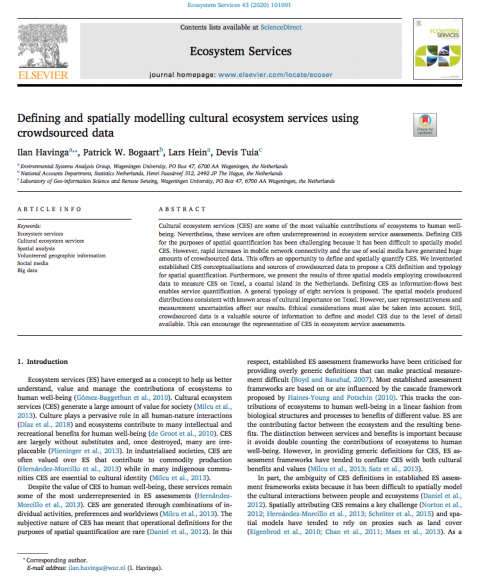Defining and spatially modelling cultural ecosystem services using crowdsourced data

Document Summary:
Cultural ecosystem services (CES) are some of the most valuable contributions of ecosystems to human well-being. Nevertheless, these services are often underrepresented in ecosystem service assessments. Defining CES for the purposes of spatial quantification has been challenging because it has been difficult to spatially model CES. However, rapid increases in mobile network connectivity and the use of social media have generated huge amounts of crowdsourced data. This offers an opportunity to define and spatially quantify CES. We inventoried established CES conceptualisations and sources of crowdsourced data to propose a CES definition and typology for spatial quantification. Furthermore, we present the results of three spatial models employing crowdsourced data to measure CES on Texel, a coastal island in the Netherlands. Defining CES as information-flows best enables service quantification. A general typology of eight services is proposed. The spatial models produced distributions consistent with known areas of cultural importance on Texel. However, user representativeness and measurement uncertainties affect our results. Ethical considerations must also be taken into account. Still, crowdsourced data is a valuable source of information to define and model CES due to the level of detail available. This can encourage the representation of CES in ecosystem service assessments.
